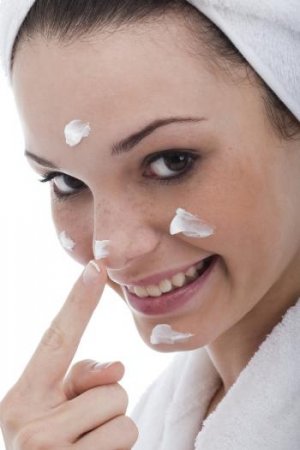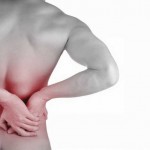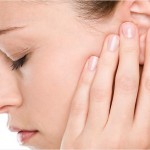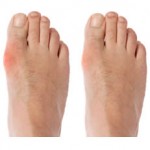
Best 10 homemade remedies for acne
Acne is the most common chronic skin condition characterized by the inflammation of the sebaceous glands. Generally, acneappears on the face, neck, chest and shoulders. According to studies, about 6 out of 10 teenagers aging 12-14 suffer from acne and it becomes more and more embarrassing as they preoccupy themselves with their appearance.
You will find below 10 natural remedies effective in treating acne
1. Raw pumpkin treatment – Scrub the skin 2-3 times a day with a freshly-cut piece of raw pumpkin. Rinse after 10 minutes with cold water. Or you can put the pumpkin juice in the freezer and use it as mentioned above. The pulp where the seeds are fixed has been used for centuries in folk medicine in order to treat wounds, burns, eczema, acne and nail fungi.
2. Fir tree oil treatment – tampon the acne with a cosmetic cotton pad soaked in white fir tree oil before bedtime.
3. Scallion (green onion) diet – such diet reduces the puckish hormones and tends to clear the skin especially in the case of youngsters. For a fortnight, eat mostly (70% of your nutrition) vegetables and 10 leaves of scallion combined with lettuce and celery on a daily basis. Among other things, this diet drains the colon and it detoxifies the body massively, making acne – though difficult to treat – cure itself or at least alleviate itself instantly.
4. Yeast treatment Fresh yeast. We are talking about the mundane ingredient used for raising the leaven, which is sold in regular grocery shops as a yeast cake, having brown color and the scent of … beer. It is eaten in combination with honey: add two spoonfuls of honey to one spoonful of yeast and mix until it becomes an homogeneous paste. The daily dosage for an adult is 3 teaspoons of yeast eaten on an empty stomach, in the morning, afternoon and night. Dry yeast. We find it in stores packed in tiny bags, and is lately preferred by the merchants and storekeepers over the fresh yeast that is preserved with difficulty and has a shorter expiry date. Before administering the dry yeast, make sure it doesn’t contain synthetic additives, if so it is not beneficial for the treatment. Is less active therapeutically speaking, but in the lack of fresh yeast, the dry yeast can by successfully used. Usage: in half liter of freshly-squeezed carrot juice (squeezed through the electric mill) add 2 teaspoons of dry yeast powder and mix well and then keep the mixture in the fridge. In order to maximize the internal treatment, two yeast masks a day are recommended on a daily basis. Preparation: 2 teaspoons of yeast, 2 spoonfuls of olive oil and 2 spoonfuls of liquid honey. The mixture must be homogeneous and will be spread across the skin for about 30 minutes; rinse with lukewarm water.
5. Echinacea treatment – put a compress infused with Echinacea on the desired area, each and every night for 10 days. This treatment works slightly as a degreaser, it prevents against skin infections and it intensifies blood circulation on the treated area. Echinacea treatment on the face must be done with caution, on small areas, especially at the beginning of the treatment, in order to spot possible allergies (if that happens, the treatment must be stopped). Tea infusion, obtained by scalding the Echinacea, is one of the most unfortunate usages of Echinacea. Why? Because through heating the majority of the active principles of the immune stimuli is destroyed. But by using the extract at low temperatures, combined with the extract at high temperatures, we will obtain a mixture with good therapeutic qualities. This infusion is made by mixing 3 teaspoons of the powder and is left to macerate for 8 hours in half a litre of water, after that it is filtered. The scalded plant is scalded once again in half a litre of water, is left to cool and then it is filtered. At last, the macerated mixture is combined with the infusion and it must be drunk in 3-4 shots throughout the day. This remedy is used against viruses, it eliminates dizziness and muscular pains associated with fever, it calms the coughing and it accelerates the healing process in case of infections.
6. Calming medical dressings for acne and eruptions – a lotion made out of equal parts (one teaspoon) of Janan flowers, pot marigold or camomile, sage leaves, lemon balm, tutsan or swallowwort. The plants are infused for 2-3 hours in 500 ml of boiling water, in a thermos or in a jar covered by a puffy towel. It is used as a medical dressing or as a lotion.
7. Orange peel – the treatment proved itself to be very effective in treating the acne. The peel must be shaved, mixed with some water and then applied on the desired area.
8. Lemon – is one of the simplest remedies against acne, its juice is applied on the desired area. Wait an hour and rinse with lukewarm.
9. Garlic Because of its antiseptic abilities, it has been used before against acne. For external use, the specialists recommend scrubbing raw garlic on the desired area and due to the fact that it clears the acne, pimples and boils. For internal use, the specialists recommend eating 3 pieces of garlic a day, for a month. This diet purifies the blood system and clears the acne.
10. A mask made out of fresh yeast, honey, wheat bran or rice flour – Dilute a kernel of yeast in boiled water that was left to cool, add honey and the wheat bran/rice flour until you obtain an homogeneous paste. Spread it on the skin, and after 30 minutes rinse with lukewarm water. Sprinkle the face with cold water, wipe it with cotton pads and apply propolis or pot marigold ointment.
Be healthy, Be natural






